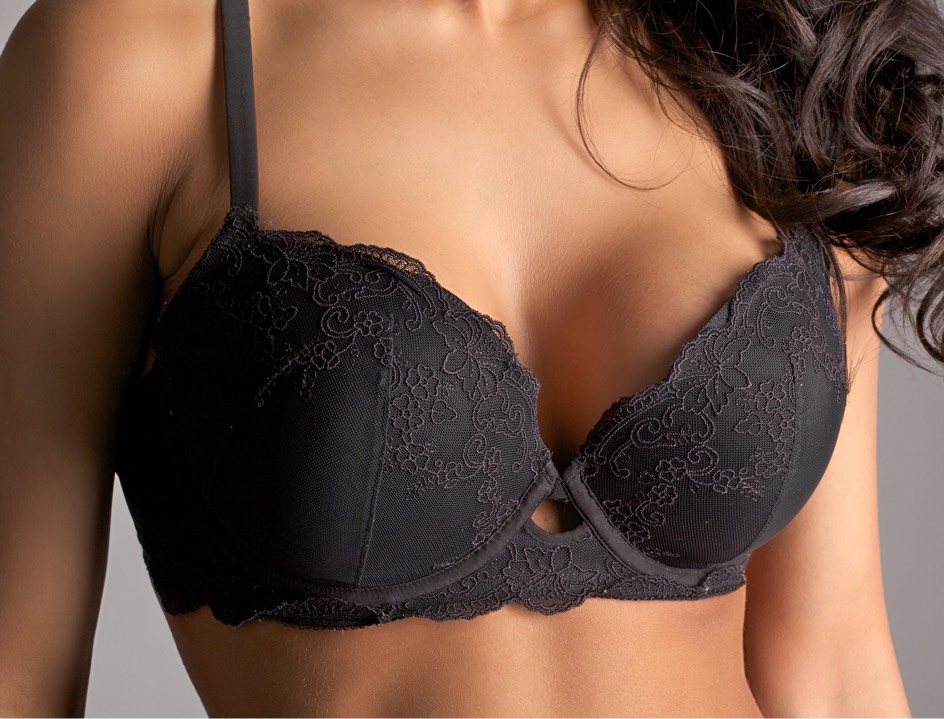
Unhappy with Your Breasts?
A breast augmentation can enhance the size and shape of your breasts and help transform your appearance. Many women, young and old, who have undergone this surgery have experienced positive changes such as…
- A more shapely appearance
- Improved self-image
- Better sexual life
- Individual results may vary
The popularity of breast augmentations continues to increase, which has in turn driven innovation. Plastic surgeons and their patients now have a wide range of options: from safe, durable saline breast implants and silicone gel breast implants to advanced surgical techniques in breast implant placement, today’s plastic surgeon offers more than ever before.
Who Can Benefit From A Breast Augmentation?
The best candidates for a breast augmentation are women who are dissatisfied with the size, shape, or fullness of their breasts. When undersized breasts exhibit disproportion with the rest of the body, the increase in size can make a dramatic improvement in a patient’s overall body shape.
In some cases, women that exhibit breast asymmetry or abnormal breast shape can also benefit from breast augmentation.


Breast Augmentation Surgery
Breast implants can be placed in multiple ways. With all breast implant placement methods, an incision is made that allows Dr. Pfeifer access to the breast, and the implant is centered below the nipple. The incisions are then closed with special sutures. Like most of the cosmetic surgeries we perform, breast augmentation is done under general anesthesia while local anesthesia with IV sedation is an option available in certain cases. The average time of surgery is 1 hour.
After Surgery
After surgery, gauze dressing will cover the incisions and the patient is given a special bra to wear during the recovery period. Swelling, bruising, and discomfort are normal after surgery, but will vary depending on the patient and the implant placement method chosen. The recovery time is generally 1-2 weeks.
Endoscopic Breast Augmentation
There are two popular techniques in breast augmentation that can greatly minimize the appearance of scars and they both utilize a surgical tool called an endoscope. An endoscope is a very small instrument that can be introduced into the body to view underlying tissues and parts.
The two main endoscopic breast augmentation methods are the following:
- TUBA – transumbilical breast augmentation
- Transaxillary – an underarm breast augmentation incision

TUBA Breast Augmentation
The transumbilical method involves an incision in the navel. For this reason, some have decided to call the procedure “belly button breast augmentation.” Because the surgeon does not have direct access to the breasts with this method, an endoscope is necessary.
After making the incision near the navel, Dr. Pfeifer creates a tunnel through the abdominal tissues to the breasts. The implants are then placed in the breast pocket, in a submuscular or subglandular position. After placement, the breast implants are filled to a specified volume with saline. The transumbilical breast augmentation technique requires a skilled breast surgeon, but when it is performed correctly the patient can obtain beautiful results with scars that are undetectable.
Transaxillary Breast Augmentation
The transaxillary technique uses an incision in the natural skin folds of the armpit, which allows scars to be well hidden and far away from the breast. Like the TUBA method, the distance to the breast is a factor to consider, but plastic surgeons can perform the transaxillary technique with or without the use of an endoscope.
The incision is made in the underarm and Dr. Pfeifer performs a dissection to obtain a view of the breast pocket. The implant is then placed in one of the three possible placement methods – submuscular, subglandular, or partial submuscular – and filled with saline to a specified volume. Silicone breast implants may also be used, but require a slightly longer incision. After surgery, the scar is small (2-5 cm) and well hidden.
Endoscopic Disadvantages
The main drawback of these procedures is the possibility of revision surgery in the future. If a problem occurs such as capsular contracture, the patient will require a conventional incision near the breast. Some plastic surgeons choose not to perform endoscopic breast augmentation or TUBA breast augmentation because it does not allow direct access to the breasts during surgery.
